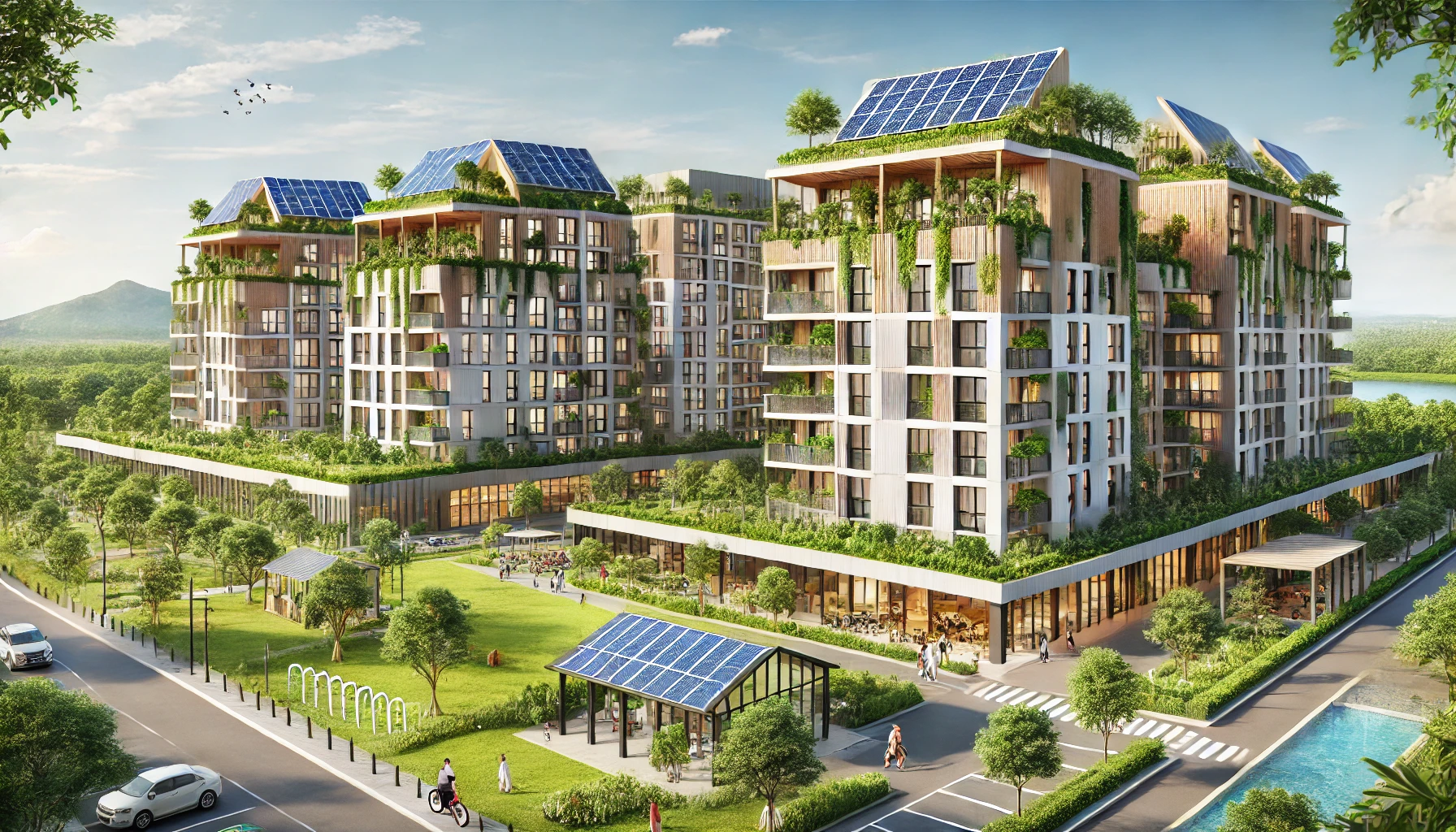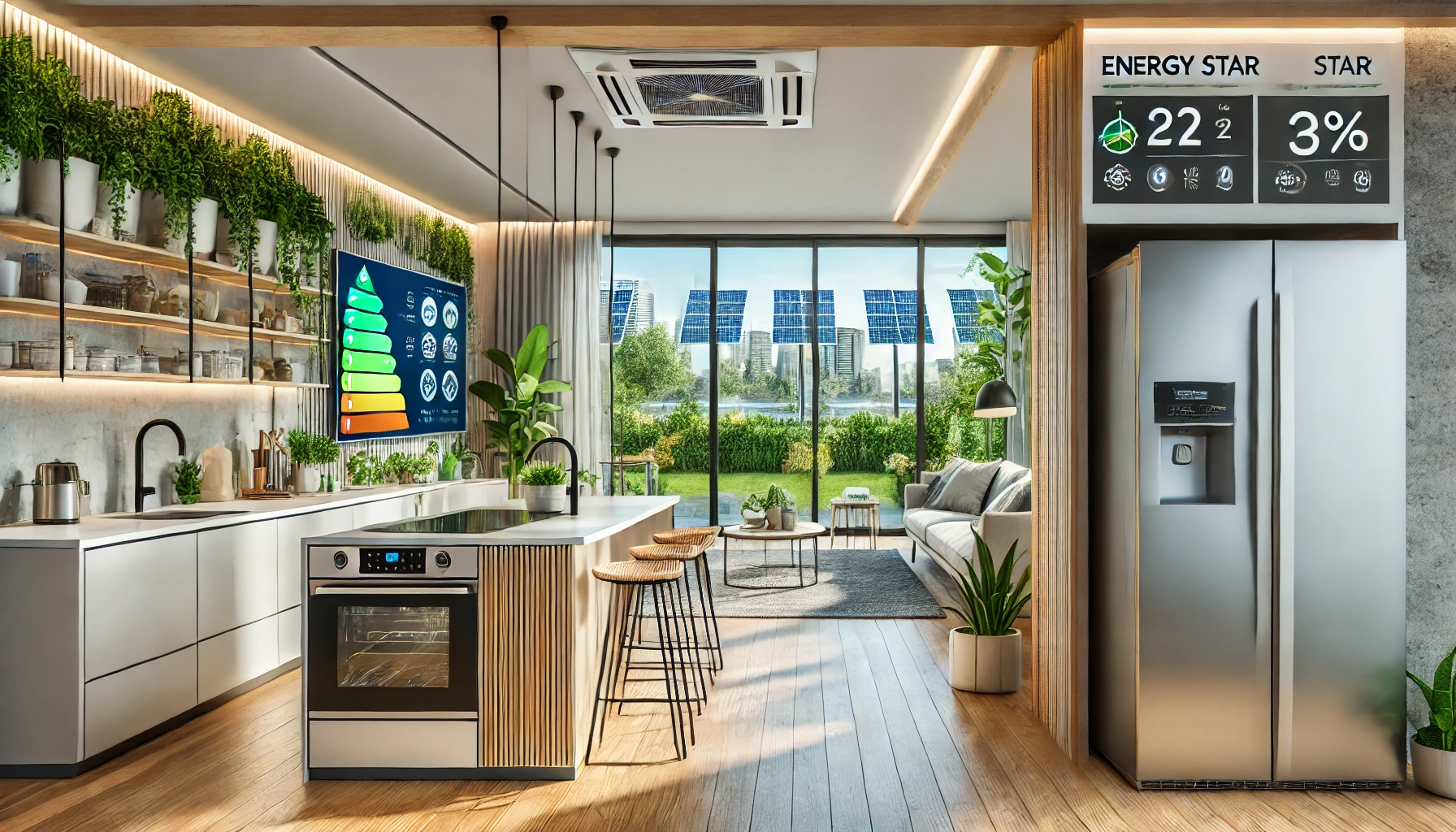
Introduction to Sustainable Apartment Living
Sustainable apartment living is no longer just a trend—it has become a necessity for a healthier planet and a more cost-effective lifestyle. As environmental concerns grow, the real estate industry is adapting by incorporating eco-friendly features into modern apartment designs.
Eco-friendly apartments are designed to minimize environmental impact, reduce energy consumption, and improve indoor air quality. These apartments prioritize sustainable building materials, renewable energy resources, energy-efficient systems, and water-saving fixtures.
By choosing sustainable apartment living, residents can significantly reduce their carbon footprint, lower utility bills, and enjoy a healthier living environment. This article explores the numerous benefits of sustainable apartment living and how it can lead to substantial financial savings.
Benefits of Sustainable Apartment Living
1. Cost Savings
One of the most compelling reasons to choose an eco-friendly apartment is the financial savings it offers. While initial investment in energy-efficient appliances, LED lighting, and smart energy management systems may be higher, the long-term savings on utility bills far outweigh the costs.
A study by the U.S. Department of Energy found that Energy Star-certified appliances use 10-50% less energy than standard appliances, leading to lower electricity and water bills. Additionally, apartments equipped with solar panels can significantly cut down on electricity costs, providing free energy from the sun.
Cost Savings Breakdown of Sustainable Features
|
Feature |
Annual Savings (%) |
|---|---|
|
Energy-efficient appliances |
10-50% |
|
LED lighting |
75% |
|
Smart thermostats |
10-15% |
|
Low-flow water fixtures |
30-50% |
|
Solar panel energy savings |
40-100% |
2. Healthier Living Environment
Sustainable apartments contribute to a healthier living space by reducing indoor air pollution and exposure to harmful chemicals. Many modern apartments incorporate low-VOC (volatile organic compounds) paints, non-toxic flooring options like bamboo or reclaimed wood, and advanced air filtration systems.
Poor indoor air quality is linked to respiratory issues, allergies, and even cardiovascular diseases. The inclusion of green roofs, natural ventilation, and air purification systems can drastically improve the quality of indoor air, reducing the risk of long-term health problems.
3. Reduced Environmental Impact
Eco-friendly apartments reduce greenhouse gas emissions and conserve natural resources through energy-efficient systems, water conservation features, and sustainable construction materials.
Some sustainable practices that contribute to lower carbon footprints include:
-
Using recycled materials such as recycled steel, reclaimed wood, and bamboo flooring.
-
Installing renewable energy systems like solar panels and wind turbines.
-
Reducing heating and cooling costs by incorporating better insulation, energy-efficient windows, and green roofs.
Sustainable Features in Apartments

Energy-Efficient Appliances and Systems
Modern sustainable apartments are designed with energy-efficient appliances and systems to reduce energy consumption and lower utility costs. These include:
-
Energy Star-certified refrigerators, washing machines, and dishwashers that consume significantly less electricity.
-
LED lighting, which uses 75% less energy and lasts 25 times longer than traditional bulbs.
-
Programmable thermostats and smart home technology, allowing residents to monitor and adjust energy use in real time.
Water Conservation Systems
Water-saving fixtures, such as low-flow faucets, toilets, and showerheads, help to conserve natural resources and lower water bills.
Another key feature is rainwater harvesting systems, which collect rainwater for non-potable uses like flushing toilets and watering gardens. Apartments with greywater recycling systems can reuse wastewater from sinks and showers for landscape irrigation, further conserving resources.
Green Spaces and Community Gardens
Many eco-friendly apartments include green roofs, rooftop gardens, and communal green spaces to enhance residents’ quality of life.
Benefits of Green Spaces:
-
Reduces urban heat island effect by lowering temperatures.
-
Improves air quality by absorbing pollutants.
-
Promotes social engagement through community gardening.
-
Provides fresh, organic produce for residents.
Sustainable Building Materials and Non-Toxic Interiors
Sustainable apartment complexes utilize eco-friendly materials to reduce environmental impact and promote healthier living environments. Examples include:
-
Recycled materials like steel and reclaimed wood.
-
Bamboo flooring, a renewable and durable alternative to hardwood.
-
Non-toxic paints and finishes, which reduce indoor air pollution and harmful chemicals.
Renewable Energy Options in Eco-Friendly Apartments
Solar Panels
Installing solar panels on apartment buildings can drastically reduce electricity costs by harnessing renewable energy resources. In some cases, residents can even sell excess energy back to the grid, creating an additional income stream.
Wind and Geothermal Energy
Some apartment complexes are integrating wind turbines and geothermal heating and cooling systems to further reduce dependence on fossil fuels.
According to the U.S. Department of Energy, geothermal heat pumps can reduce heating and cooling costs by 30-60% compared to traditional systems.
Long-Term Financial Benefits of Sustainable Apartments
While sustainable apartments may come with a slightly higher initial cost, the long-term financial benefits make them a worthwhile investment.
Financial Benefits Include:
-
Lower utility bills due to energy-efficient appliances and renewable energy systems.
-
Higher property values as eco-friendly apartments become more desirable.
-
Government incentives for installing energy-efficient features and renewable energy systems.
Many states offer tax credits and rebates for adopting sustainable practices, making green living even more affordable.
The Future of Sustainable Apartment Living

As awareness of environmental concerns grows, the demand for sustainable apartments will continue to rise. Future developments will focus on:
-
Advanced smart home technology for better energy management.
-
More efficient renewable energy systems such as solar and wind power.
-
Increased use of sustainable materials in apartment construction.
Final Thoughts
Living in an eco-friendly apartment is a smart financial and environmental decision. Not only does it help conserve natural resources, but it also leads to significant savings through reduced utility bills, better indoor air quality, and a healthier living environment.
If you’re considering making the switch to sustainable apartment living, start by looking for features like Energy Star-certified appliances, low-flow fixtures, solar panels, and green building materials. Making eco-friendly choices today ensures a sustainable future for generations to come.
Additional Resources
